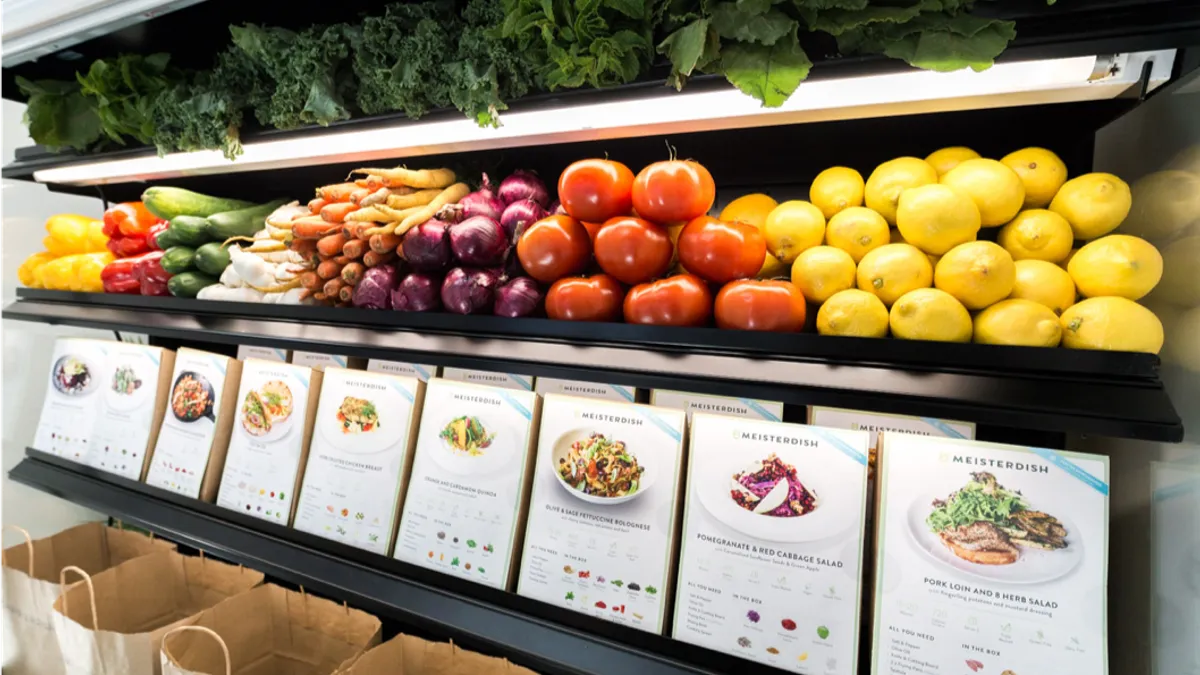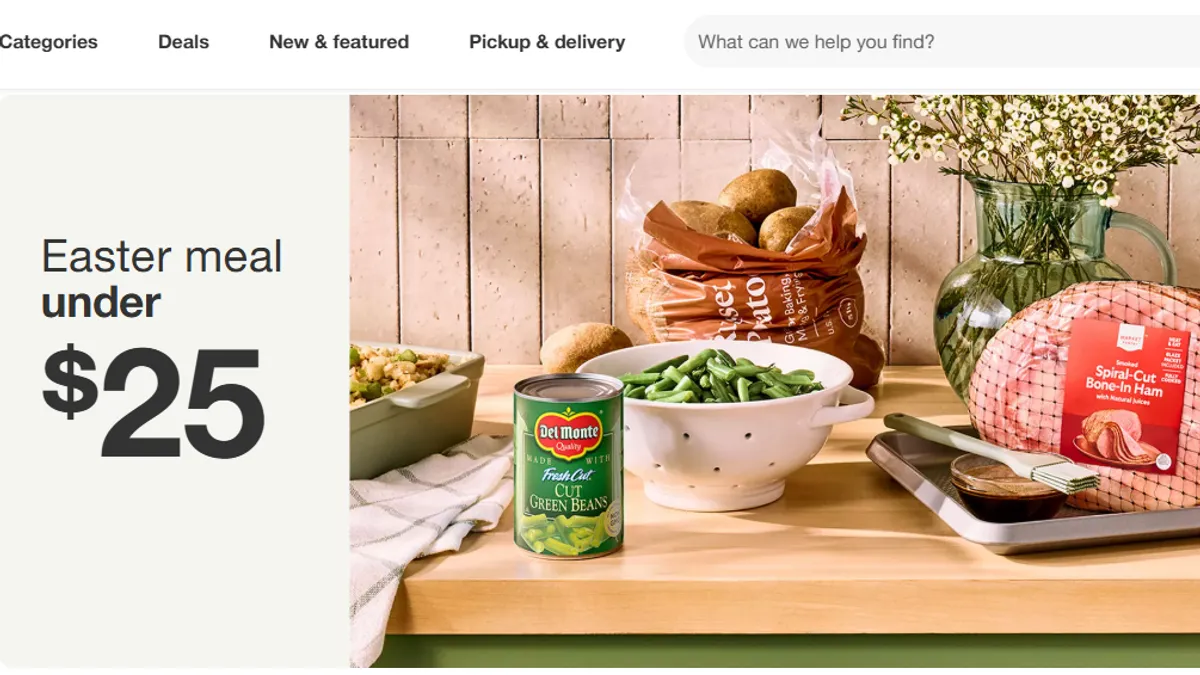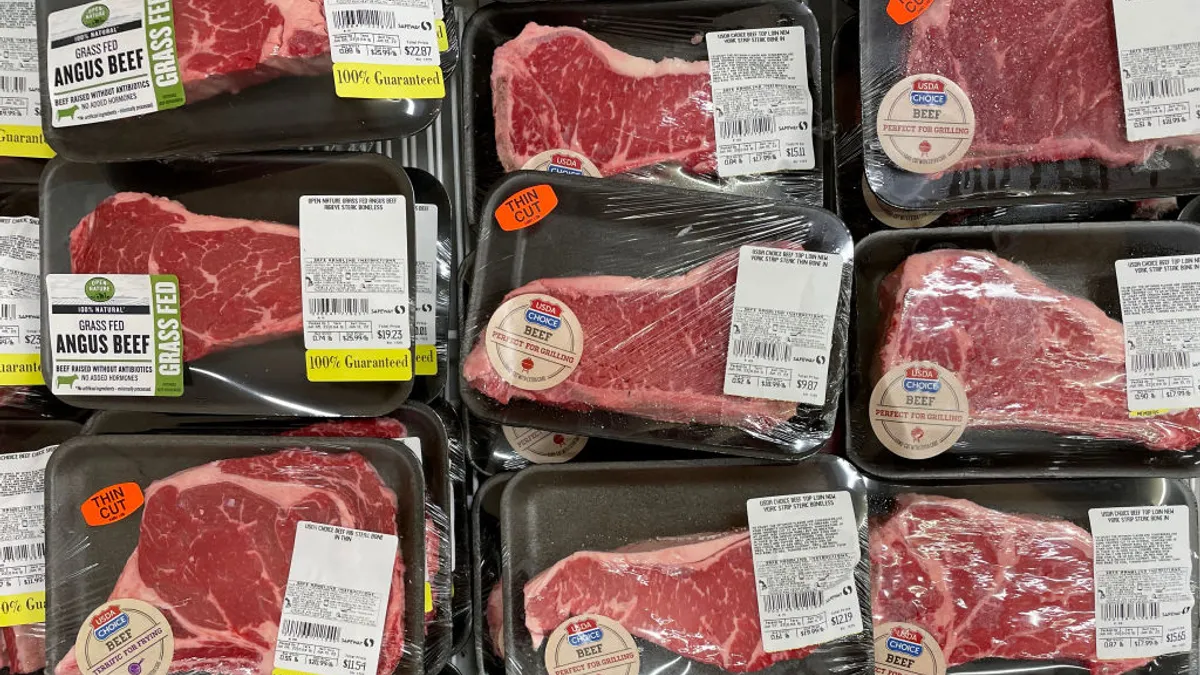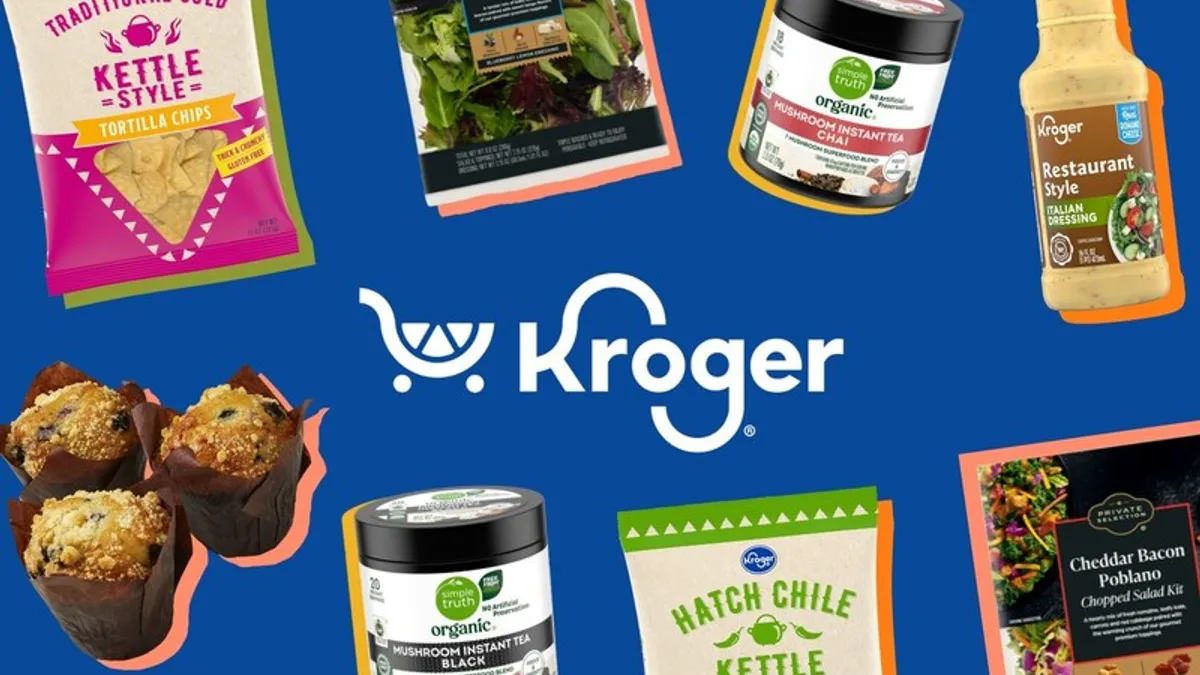Two years ago, in-store meal kits were the talk of grocers nationwide and the proverbial saviors for struggling online subscription businesses like Blue Apron.
Albertsons’ high-profile acquisition of Plated brought kits to store shelves in 2018, and Kroger acquired Home Chef to help manage its in-store meal solutions. HelloFresh piloted its kits in Stop & Shop and Giant Food stores, and in early 2019, Amazon introduced its meal kits in some Whole Foods locations. Around the same time, Nielsen reported that in-store kits were driving sector growth.
"I think grocers felt like subscription meal kit companies were really a threat, and I think they were, because they’re eating out of their fresh category," Hannah de Boer, co-founder and CEO of Meisterdish, a meal kit technology platform for grocers, told Grocery Dive. "So their answer to that was to acquire these larger meal kit companies."
Once they acquired them, de Boer thinks retailers saw meal kit companies weren’t making financial sense, so they began to try the in-store model.
It wasn’t as seamless as retailers expected, however. Albertsons removed and attempted to relaunch Plated kits in stores after canceling the online service. Amazon never rolled out its kits broadly at Whole Foods and customers shied away from the meal kit industry as a whole.
In-store meal kits in the time of COVID
Meal kit companies, which have struggled to retain customers and turn a profit, have experienced surging interest during the coronavirus pandemic as people cook at home and turn to new sources for fresh meals.
Shares of Blue Apron have surged far this year, while other companies like Sun Basket and HelloFresh have gained new users as millions more shoppers turn to online shopping. As restaurants have been forced to shutter due to safety requirements, some have turned to the meal kit model to let customers make their signature dishes at home.
All of this promises to be a boon for grocers' in-store meal kits. But the results have been a mixed bag so far.
At first Kroger-owned Home Chef, which now sells its meal kits in more than 2,000 Kroger stores across banners, saw a spike in demand as shoppers stocked up in the early weeks of the pandemic. The company offers a few variations of meal kits, including its classic model where customers prep and cook the whole meal; oven-ready kits, which require cooking but no chopping, and a ready-to-heat line.
Since that initial surge, however, sales have seen a marginal decrease as in-store traffic has quieted, Rich DeNardis, Home Chef's chief revenue officer, told Grocery Dive.
"Our [in-store] kits are more of a browsable experience," he said. "We’re certainly still in the early days of introducing the brand to Kroger households. And so building that nice cycle of introducing folks to the brand as they’re walking through the store … that’s obviously been slowed a little with trips being down."
Meal kits as a whole are performing notably better than they have in the past, according to Nielsen data. Sales of in-store meal kits in the U.S. were up 23% during the one-week period ending May 2 compared to the same period a year ago, and up 30% over the nine-week period ending the same day.
Meisterdish, which equips grocers with the tech tools necessary to produce on-demand meal kits in stores using fresh ingredients, launched a pilot at a Schnucks flagship location in St. Louis in October. De Boer said the test counter was performing well and saw a major sales surge in mid-March due to the pandemic.
"People wanted to cook at home," de Boer said. "And with our options they could cook in 10 minutes and it was still fresh food. It wasn’t something that was sitting on the shelf."
At Schnucks, customers could pick up a grab-and-go meal kit at the counter, order on-demand at an adjacent kiosk, or order ahead for pickup or delivery. The meal kit counter was located in the deli between the meat and prepared foods areas.
But the space was temporarily shuttered along with other Schnucks food counters when the pandemic hit. Now, de Boer said Meisterdish is trying to figure out how to move production back-of-house to align with guidance surrounding the pandemic and continue launching with other grocers.
Keeping it fresh, interesting and affordable
With salad bars and other self-service stations shelved for the foreseeable future, more dollars could shift to meal kits for grocers that stock them. As stay-at-home restrictions lift and shoppers become more comfortable visiting stores, more of them are likely to gravitate toward packaged selections and new service models that can address safety guidelines.
But just like before the pandemic struck, freshness and shelf life remain a concern for companies and consumers.
Darren Seifer, food and beverage analyst with the NPD Group, told Grocery Dive that at a time when people are losing their jobs and there’s increased concern over the economy, buying food that goes bad quickly translates to money going out the window.
"That is a bit of a challenge. We know if you get that meal kit, the clock is ticking right away," he said.
DeNardis acknowledged that fresh meal kits don’t have a very long shelf-life, so the system of getting products to the store needs to be as seamless as possible to maximize the time on-shelf and minimize shrink. Home Chef’s experience with these logistics has improved since being acquired by Kroger, DeNardis noted.
"We have really good visibility into how things are going on a day-to-day basis and can make tweaks accordingly," he said.
De Boer said the shelf life of made-to-stock meal kits also limits the variety retailers can offer. With Meisterdish, the ingredients are prepped fresh and the meal kits are sold the same day, de Boer said. That allowed the company to offer as many as 15 varieties in its original New York City test kitchen and about nine different options, with some rotated on a weekly basis, through its Schnucks pilot in St. Louis.
"Consumers give in-store meal kits a little better score for being a good value for the money."

Darren Seifer
Food and beverage analyst, NPD Group
Some of the options in St. Louis include a single-serve white truffle linguine for $8, wasabi soy-glazed steak for two at $15, and a cherry kale salad for $8, which also serves two.
The variety keeps customers interested, de Boer said.
"From the beginning, some customers were coming in more than two times a week," she said of the Schnucks counter.
Research over the last two to three years show that the cost of meal kits is a major issue, with many Americans saying meal kits are too expensive. But Seifer said NPD Group research shows a slightly higher satisfaction rate among consumers buying meal kits from the store, with 36% saying they are a good value versus 34% of those who buy them online or through a subscription.
"Consumers give in-store meal kits a little better score for being a good value for the money," Seifer said. "That’s important because the top reason they stop using them is because they find them too expensive, and we find that in-store kits, some have been able to compete a little bit better on price," he said.
Between the pandemic, innovative models like Meisterdish and in-store expansions like Home Chef’s, sources are confident the future of meal kits includes space on the grocery store floor.
"I think the need is still there," de Boer said. "I feel very passionate that grocers are the ones that can do this right, and we’re there to help them. I really think they need to do this to stay relevant."
Seifer said the pandemic gives the meal kit industry a chance to become more relevant with consumers.
"With everything going on right now, everyone’s stressed about how to make dinner more often in the home. Perhaps this is an opportunity for them to prove their value," Seifer said.





















